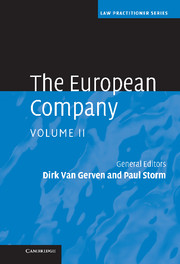16 - Norway
from Part II - Application in each Member State
Published online by Cambridge University Press: 06 July 2010
Summary
Introduction
1. Norway has implemented the Regulation of 8 October 2001 on the Statute for a European company (the ‘Regulation’) by Act N° 14 of 1 April 2005 on the European company, implementing Annex XXII N°10a of the EEA Agreement (the ‘SE Act’). The SE Act entered into force on 1 April 2005.
The king was granted powers in the SE Act to enact regulations (forskrift) governing employee involvement in SEs, as set out in the Directive of 8 October 2001 supplementing the Statute for a European company with regard to the involvement of employees (the ‘Directive’). Accordingly, a national regulation on employee involvement in SEs (the ‘Employee Involvement Regulation’) was adopted on 1 April 2005, along with the SE Act, and entered into force that same day.
2. The Regulation has been incorporated by reference into Norwegian law. Section 1 of the SE Act provides that the Regulation applies as Norwegian law (with the amendments contained in the first protocol of Annex XXII to the EEA Agreement and elsewhere therein). The SE Act is quite short and consists of only fourteen brief sections. Apart from incorporating the Regulation, the SE Act mainly contains references to certain provisions of the Norwegian Public Limited Companies Act 45/1997 (the ‘PLC Act’) where there was a need for country-specific regulation. Thus, the SE Act contains very few new rules in addition to the Regulation (see Volume 1, chapter 2 of this book).
- Type
- Chapter
- Information
- The European Company , pp. 411 - 438Publisher: Cambridge University PressPrint publication year: 2008

